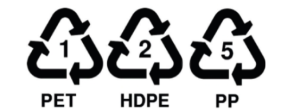Cautions
Information on the use of sodium chlorite-acid mixtures, known as two-component MMS, for oral therapeutic use has been discontinued because they are obsolete and may have side effects that are not present in CDS. They are now only used as a precursor for making CDS gas.
Despite having the word “chlorine” in its name, the CDS precursor, sodium chlorite, is different from hypochlorite (bleach), although they are often confused. When sodium chlorite (NaClO2) is mixed with acid, chlorine dioxide is formed, which is always yellow and has a pool-like odor. However, the mixture of hypochlorite and acid produces very strong and toxic gases, which are completely unbearable. In addition, the reaction of sodium hypochlorite generates many effervescent bubbles, unlike chlorite.
Large amounts of chlorine dioxide should not be inhaled for a long time, as it can cause throat irritation and breathing difficulties. However, in small amounts it is safe, as Dr. Norio Ogata’s studies show. The scientific evidence on the toxicity of chlorine dioxide relates mainly to inhalation, which is not the same as ingesting it in small amounts, which is safe.
Water is always added to 3000 ppm CDS (0.3% concentrated chlorine dioxide) before oral use. Never use in its concentrated form except on the skin. If spilled on eyes or clothing, rinse with plenty of water.
Avoid using metal containers for processing or storing CDS. Metal containers may react with chlorine dioxide and rust. This includes low grade stainless steel, which is an alloy containing metals such as nickel and chromium.
It is not recommended to use rubber droppers for storing sodium chlorite (NaClO2) because of their lack of resistance to the alkaline pH of 13 of sodium chlorite. Over time, the rubber may dissolve in the liquid, leaving particles in the solution. In addition, they are not suitable as droppers because they produce droplets that are too large.
The CDS precursor, sodium chlorite (NaClO2) should be stored in PP / HDPE / PE ophthalmic dropper bottles. These materials are resistant and will withstand alkalinity and acidity (pH 13 / pH 1) for many years. It is not recommended to use transparent PET type plastics to store concentrated sodium chlorite for a long time, as they may disintegrate and leave residues in the solution.
PET is a material that reacts with sodium chlorite due to its high pH, causing the polymer to disintegrate over time. However, PET is suitable for daily CDS due to its loe concentration and neutral pH. For long-term storage of CDS concentrate, brown pharmaceutical bottles with airtight caps are used.
It is possible to use citric acid to make CDS, as long as it is not mixed directly into the final solution.

CDS should not be used in concentrated form for occlusive dressings, only in diluted form up to 100 ppm . However, as a spray, it is safe for the skin as because much of the gas evaporates.
There have been no known interactions in the last 16 years between CDS and other medications taken apart one hour of each other. This is because CDS breaks down into oxygen and salt and does not cause reactions with other medications.
People taking Warfarin can use CDS, but should measure their clotting levels, as CDS improves blood viscosity. This helps to reduce the dose of Warfarin, which is very toxic.


